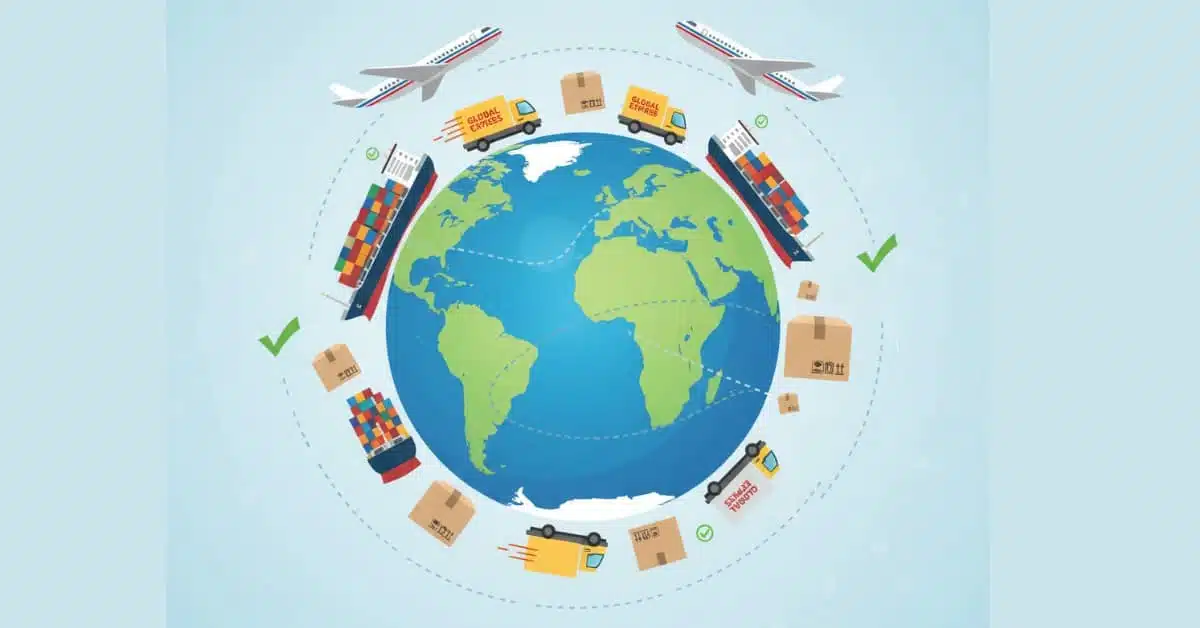Beginner’s Guide to Shipping International Orders Efficiently

International shipping may sound complicated, but it’s an essential skill for sellers who want to expand their reach and attract global buyers. Whether you’re running a small business or selling through marketplaces like JustiBuy.com, understanding how to ship internationally — efficiently and cost-effectively — can be the difference between satisfied customers and frustrated ones.
This guide will break down the basics of international shipping, helping beginners avoid common mistakes and ensure smooth deliveries worldwide.
Why International Shipping Matters
In today’s global economy, limiting your business to domestic buyers means leaving money on the table. Customers from different countries are actively looking for unique products, and if you don’t offer international shipping, they’ll buy from competitors who do.
Efficient international shipping can help you:
-
Expand your customer base to new regions.
-
Boost sales by making your products available worldwide.
-
Build brand trust by delivering orders on time.
-
Gain a competitive edge in crowded marketplaces.
But international shipping also comes with challenges: customs regulations, high costs, long delivery times, and language barriers. That’s why proper planning is key.
Step 1: Understand International Shipping Basics
Before you begin, you need to understand the building blocks of international shipping:
-
Carriers: These are companies like FedEx, DHL, UPS, or local postal services that transport your goods.
-
Transit Times: International deliveries typically take longer — anywhere from a few days to several weeks.
-
Costs: Shipping rates vary depending on weight, size, destination, and delivery speed.
-
Customs: Every package must pass through customs clearance in the destination country.
Once you grasp these fundamentals, you’ll feel more confident handling global orders.
Step 2: Choose the Right Carrier
Not all shipping carriers are equal when it comes to international deliveries.
-
Global carriers (DHL, FedEx, UPS): Fast, reliable, but usually more expensive.
-
Postal services: Affordable but slower, with less detailed tracking.
-
Hybrid solutions: Some marketplaces like JustiBuy.com partner with logistics providers for discounted rates.
Tip: If you’re just starting, experiment with multiple carriers to find the best balance between cost and reliability.
Step 3: Calculate Shipping Costs Accurately
One of the biggest mistakes beginners make is underestimating shipping costs. This can eat into your profits or frustrate customers.
When calculating costs, consider:
-
Weight & dimensions of the package.
-
Destination country.
-
Delivery speed (standard vs. express).
-
Additional services (insurance, tracking, signature on delivery).
Use online shipping calculators from carriers to estimate costs before listing your products.
Step 4: Understand Customs Regulations
Customs clearance can be a challenge for international sellers. Each country has its own rules about what can be imported and what duties apply.
To ship smoothly:
-
Check the prohibited items list for each destination.
-
Be honest on customs declaration forms — never mislabel items.
-
Provide accurate HS (Harmonized System) codes for your products.
-
Factor in import taxes and duties — sometimes the buyer pays, other times you may choose to include them in the price.
Transparency reduces delays and keeps buyers happy.
Step 5: Package Your Products Safely
International shipping often involves multiple checkpoints and rough handling. Proper packaging ensures your items arrive safely.
Best practices:
-
Use sturdy boxes and double-wall cartons for fragile items.
-
Add cushioning like bubble wrap or packing peanuts.
-
Seal packages with strong tape.
-
Clearly label the package with both sender and recipient details.
A well-packaged order not only prevents damage but also reflects professionalism.
Step 6: Offer Tracking and Insurance
Customers want reassurance when waiting weeks for an international order. That’s why tracking and insurance are crucial.
-
Always provide a tracking number so buyers can monitor progress.
-
Offer insurance for high-value items to cover losses or damage.
-
Communicate updates — send notifications when an item is shipped and delivered.
This level of transparency builds trust and reduces disputes.
Step 7: Manage Delivery Times Expectations
International orders can take longer than domestic ones, and unrealistic promises often lead to disappointed buyers.
Tips:
-
Be honest about delivery windows (e.g., “7–21 business days”).
-
Provide both standard and express options so customers can choose.
-
Communicate any delays caused by customs or global shipping issues.
When buyers know what to expect, they’re more patient and understanding.
Step 8: Reduce Costs with Smart Strategies
International shipping can be expensive, but there are ways to optimize costs:
-
Bulk shipping: Send multiple packages at once for lower per-item rates.
-
Flat-rate shipping: Some carriers offer flat rates for standard box sizes.
-
Marketplace discounts: Platforms like JustiBuy.com often negotiate reduced rates with carriers.
-
Regional warehouses: If sales are high in one area, consider storing stock closer to customers.
These strategies can keep your products competitive in global markets.
Step 9: Provide Clear Return Policies
International returns can be tricky, but customers feel more comfortable buying when they know their options.
-
State your return policy clearly on your listings.
-
Explain whether the buyer or seller pays for return shipping.
-
Offer refunds or replacements for damaged/lost items.
A transparent return policy shows professionalism and builds trust.
Step 10: Stay Updated on Global Shipping Trends
The shipping world changes constantly — new trade regulations, global crises, or carrier policy updates can affect deliveries.
-
Follow updates from major carriers.
-
Stay informed about international trade agreements.
-
Subscribe to shipping news or join seller communities.
Keeping updated helps you adapt quickly and avoid disruptions.
Final Thoughts
International shipping doesn’t have to be overwhelming. With the right approach, you can expand your reach, serve global customers, and grow your business efficiently.
By choosing reliable carriers, understanding customs, packaging securely, and managing customer expectations, even beginners can handle international shipping like pros.
At JustiBuy.com, we support sellers with tools, guides, and partnerships to make international selling smoother. With this beginner’s guide, you’re one step closer to building a global business.








